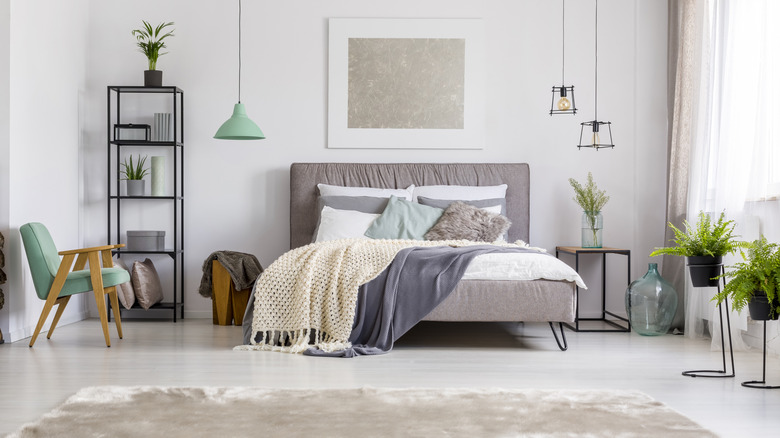The Simple Formula To Follow For Balanced Lighting In Any Room
The right lighting can make an ordinary, meh room look like it was custom-designed. It highlights stand-out features, creates a specific mood, and lets you use a room to its fullest potential. The secret to using lighting to make your home look more expensive is intentionally blending the four main types of lighting in a way that supports the room's style and function. Ambient lighting is the room's primary source of light, typically a combination of overhead and natural lighting. Accent lighting is focused on the features or areas you want to emphasize in a room. Task lighting is concentrated light that helps you perform an activity, such as reading, cooking, or crafting. Decorative lighting can contribute to any of the other types of lighting, but its primary purpose is to add to a room's aesthetic.
Layering these four types of light will help you create balanced lighting in your room. Though the specifics will vary depending on the room, interior designers favor a 2:1 ratio of ambient light to other types of light in a room. This combination creates rooms that are comfortably lit without harsh contrasts. Keeping this formula in mind can help you choose the perfect lighting for your space.
Examples of balanced lighting in different rooms
How you approach using the lighting formula will vary depending on the purpose of your room. For instance, you want to create a relaxing atmosphere in your bedroom. While you will have some task lighting, such as reading lamps beside the bed, you'll mostly balance the ambient light with accent or decorative light. In contrast, when you're in the kitchen, you're typically working to prepare a meal, so your proportion of task lighting will be higher. The best type of lighting for your kitchen allows for both work and relaxation. Pendant lighting over an island workspace or LED strips under cabinets pair well with soft ambient light to give you enough light to read recipes and enjoy dinner.
A living room is usually the most versatile room in your house, so consider how you use it when you're designing your lighting plan. Floor lamps can provide task lighting near sitting areas, while decorative spotlights can highlight your favorite art pieces. Dimmers on your ambient lighting allow you to adjust the mood for different activities. You can brighten up the room for holiday parties and dim it for movie night.

